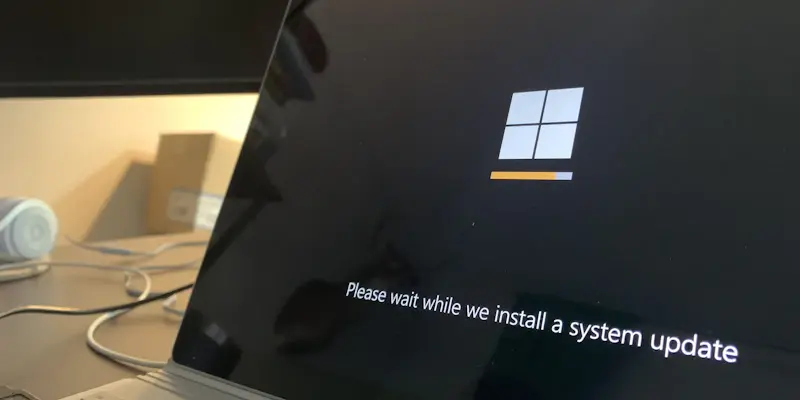In a continuous effort to streamline its operations and optimize user experience, Microsoft has announced a series of significant updates within its Microsoft 365 (M365) suite. These updates come as a pivotal part of Microsoft’s broader mission to modernize its product offerings, consolidate operations, and eliminate redundancies, ultimately making the entire suite more effective both for the company and its users. In this dynamic landscape, staying updated on technological changes is essential for preventing operational interruptions and unexpected costs, particularly when dealing with critical tools like Microsoft Teams.
End of Support for Windows 10
One of the most notable changes announced is the end of support for Windows 10, set for October 14, 2025. This decision has sparked some discontent among users, with many expressing resistance to Microsoft’s push toward upgrading to newer PCs. Roberts elaborates that although the transition may seem abrupt for some, many corporate entities have already made the shift to Windows 11, which could lessen the impact of this move. Despite this, not all enterprise consumers have been equally thrilled about the AI enhancements in Windows 11, although these updates have generated considerable excitement among investors.
To accommodate users who aren’t ready to transition immediately, Microsoft has made extended support for Windows 10 available for three additional years. This move provides a buffer period for those needing more time to prepare for the switch. It’s worth noting that by October 2025, enterprises are expected to have fully transitioned from Windows 10 to Windows 11. This transition could be seen as a strategic opportunity to adopt AI-enabled hardware alongside the software upgrade, thus positioning organizations favorably in line with technological trends.
Transition to Windows 11 and AI PCs
As enterprises gear up for the end-of-service (EOS) for Windows 10 by October 2025, Andrew Hewitt, Principal Analyst at Forrester Research, anticipates that the rise of AI-integrated PCs by 2024 will play a crucial role in driving the adoption of Windows 11. This is seen as an opportune moment for businesses to switch to Windows 11, leveraging AI capabilities to build a future-proofed digital infrastructure. The retirement of features like “Tags” in M365 apps between January 6 and January 10, 2025, is part of Microsoft’s broader move to optimize and enhance its product lineup.
For users of webhook-based Office 365 Connectors in Teams, it is crucial to update URLs by January 31, 2025, to avoid any disruptions, as the service will be retired by the end of that year. Other features slated for retirement include Private Unlisted Groups in Microsoft Viva Engage’s External Networks, the PowerPoint QuickStarter Feature, and the alert notifications feature in Microsoft Defender for Identity. Collective retirement of these services underscores Microsoft’s strategic shift toward a more cohesive and integrated set of features.
Deprecation of Legacy Teams Clients
The decision to deprecate legacy Teams clients, set for full retirement by July 1, 2025, is driven by a focus on performance optimization rather than cosmetic upgrades. Microsoft aims to enhance the performance and responsiveness of Teams by transitioning from older development platforms like Electron and AngularJS to newer ones such as WebView2 and React. According to Roberts, this evolution represents a significant step in addressing Microsoft’s accumulated technical debt without overwhelming users. However, some short-term inconveniences, like the necessity to re-pin the Teams app, may arise.
For power users and administrators, migrating from Office 365 Connectors to alternatives such as the Teams Workflow app could pose a serious disruption, potentially impacting automations until the migration is complete. The extent of this inconvenience will vary depending on each organization’s complexity regarding connectors, apps, and extensions. Nonetheless, Microsoft has provided comprehensive guidance and resources to aid in making this transition as smooth as possible, although meticulous evaluation and inventory of tools for critical operations will be necessary to minimize disruptions during this period.
Migration Challenges and Efficiency Guidance
The challenges in migrating to updated systems and features vary significantly based on the complexity and scale of an organization’s existing connectors, apps, and extensions. To mitigate potential downtime and maintain productivity, Microsoft has designed efficiency guidelines meant to assist administrators in completing transitions quickly and effectively. Moving forward, support for M365 Apps on Windows Server 2016/2019 and legacy Office products such as Office 2016 and 2019 will cease by October 2023, further pushing users toward cloud subscriptions and more current iterations of Microsoft’s offerings.
Roberts suggests that this shift indicates a broader effort by Microsoft to move toward a recurring revenue model through cloud-based subscriptions. While this transition may bring new security and feature-related challenges for corporations deeply rooted in the M365 ecosystem, it also aligns with Microsoft’s long-term goal to deliver enhanced performance and streamlined operations. For organizations, the key will be adapting to these changes strategically while ensuring the least disruption to ongoing operations.
Embracing Cloud and AI Integration
Microsoft has announced significant updates to its Microsoft 365 (M365) suite as part of its ongoing effort to streamline operations and enhance user experience. This initiative aligns with Microsoft’s broader goal to modernize its products, consolidate functions, and remove redundancies, making the suite more efficient for both the company and its users. Staying current with these technological changes is essential to prevent operational hiccups and unforeseen expenses, especially when handling essential tools like Microsoft Teams.

